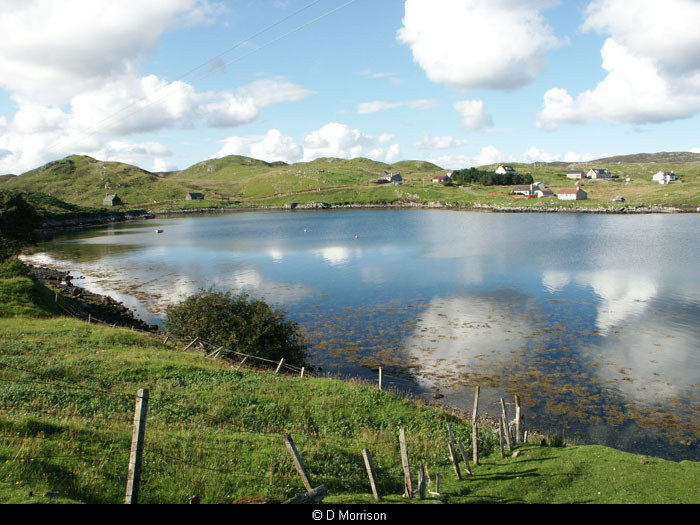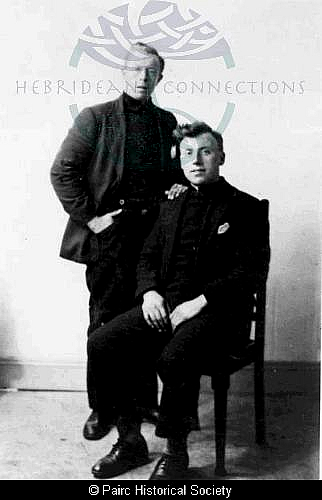42124: Orinsay Resettled
The inhabitants of Orinsay were cleared in 1843 to make way for a sheep farm. After unsuccessful attempts in 1891 to resettle the village, it was three decades and a generation before it was finally lotted. This article appeared in Pairc Historical Society’s Tional magazine in 1996.
It was in 1922-3 that Orinsay was eventually resettled. The deprivation caused by congestion was never dealt with in a constructive manner so land raiding continued to create tension between the estate and the people.
The population peaked in Pairc just before the Great War. The war itself took care of overpopulation to a certain degree and it was never to rise to such a level again. Many of those who survived the war had got a taste of a different lifestyle and did not return to their squatter status on overworked, unproductive crofts. The emigrant ships also carried away a lot of young people in the early twenties.
The years following the war saw a more sympathetic attitude taken to the need for more land being made availabe for the people. While agitation continued in Galson and Gress the situation was relatively calm in Pairc, although their requirements were being pressed just as strongly through Government channels.
Murdo MacMillan (Murchadh Louis), 14 Orinsay, who died in 1996 at the age of 86, recounted a few years before his death:
"We came to Orinsay in 1925. I was born in 1910 and I had already left school before we moved. The overcrowding was bad, there were three families on my grandfather’s croft, where we stayed. It was the lack of ground for cultivation and the site for a house that made my father go to Orinsay."
"We were not the first to go. I think the Mate went to croft number 2 first. After that they just moved in gradually, bringing their materials and livestock as best they could. Lord Leverhulme owned the island at the time, but we were dealing with a man called MacGillvray from the Board of Agriculture and he wanted to set up a model crofting village in Orinsay. He had a plan with a road running through the village, with the houses all on one side and the crofts running down to the shore. New wells were to be dug to supply piped water to every home. There were two types of houses on offer – a stone built house with slated roof which was going to cost two pounds and ten shillings a year rent or a house with two stone built gables with corrugated iron walls and roof for two pounds rent a year."
"Sadly, the people rejected the plan, which seems difficult to understand nowadays. But remember that they had never had the authorities on their side before and they were very suspicious that there was something underhand in the offer that would come back to trouble them later. It is possible that the responsibility for finding the rent until the day that they died was a big burden to some of them as well, they had seen many evictions over a few pennies of debt in their time."
"My father found the walls of an old house on the croft and he rebuilt the walls and covered it over with a thatch of heather. That’s what everyone did in the end, built a house with whatever material they could get their hands on and they were quite happy with that. They had good land and good fishing to go along with it. But because they turned down the Board’s plan they did not get a road for another twenty five years and they were left behind with other Board of Agriculture improvements as well."
"Mr MacGillivray took his plan to Gravir and built his model village there. It is still there to this day at Glenside, with all the houses built above the road, each with fresh water pumped to the door."
Comunn Eachdraidh na Pairc
Details
- Record Type:
- Story, Report or Tradition
- Date:
- 1923
- Type Of Story Report Tradition:
- Magazine Article
- Record Maintained by:
- CEP


